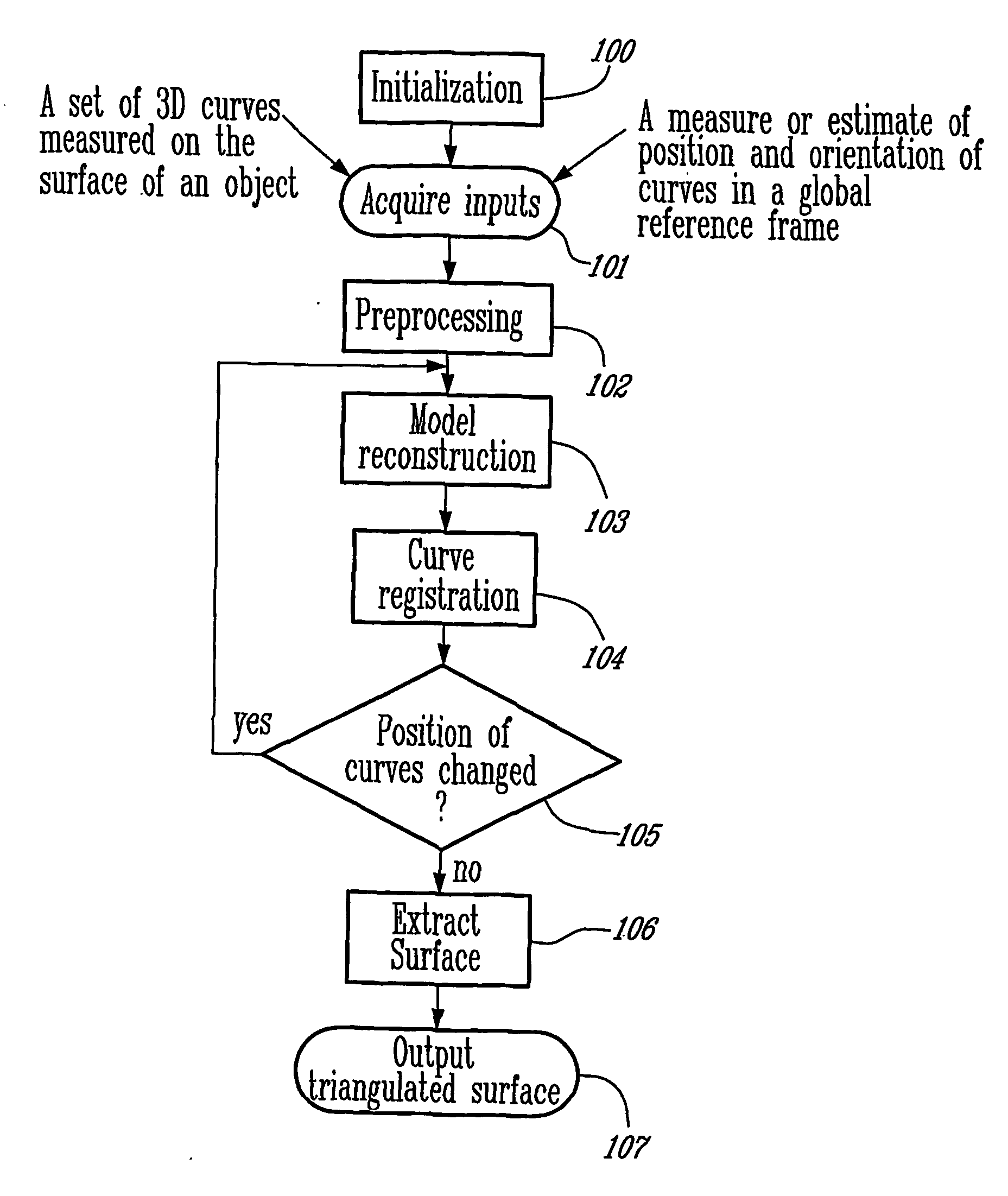Three-dimensional modeling from arbitrary three-dimensional curves
a three-dimensional model and curve technology, applied in the field of three-dimensional imaging systems, can solve the problems of limiting the the alignment error of each curve cannot be individually corrected, and the bulky and cumbersome movement so as to improve the quality and accuracy of the reconstructed surfa
- Summary
- Abstract
- Description
- Claims
- Application Information
AI Technical Summary
Benefits of technology
Problems solved by technology
Method used
Image
Examples
Embodiment Construction
[0052] The present invention now will be described more fully hereinafter. However, this invention may be embodied in many different forms and should not be construed as limited to the embodiments set forth herein; rather, these embodiments are provided so that this disclosure will be thorough and complete, and will fully convey the scope of the invention to those skilled in the art.
[0053]FIG. 1 shows a flowchart describing the functioning of the method for surface reconstruction from arbitrary 3D curves as well as for registration of 3D curves to the reconstructed surface.
Initialisation
[0054] Initialization step 100, illustrated in FIG. 2, requires two user-supplied parameters: bounding box of the object to be reconstructed and the resolution of the volumetric lattice of points (volumetric structure).
[0055] The bounding box is defined as coordinates bmin=[xmin,ymin,zmin]T and bmax=[xmax, ymax, zmax]T of two opposite corners of the box that completely contains the object, such ...
PUM
 Login to View More
Login to View More Abstract
Description
Claims
Application Information
 Login to View More
Login to View More - R&D
- Intellectual Property
- Life Sciences
- Materials
- Tech Scout
- Unparalleled Data Quality
- Higher Quality Content
- 60% Fewer Hallucinations
Browse by: Latest US Patents, China's latest patents, Technical Efficacy Thesaurus, Application Domain, Technology Topic, Popular Technical Reports.
© 2025 PatSnap. All rights reserved.Legal|Privacy policy|Modern Slavery Act Transparency Statement|Sitemap|About US| Contact US: help@patsnap.com



